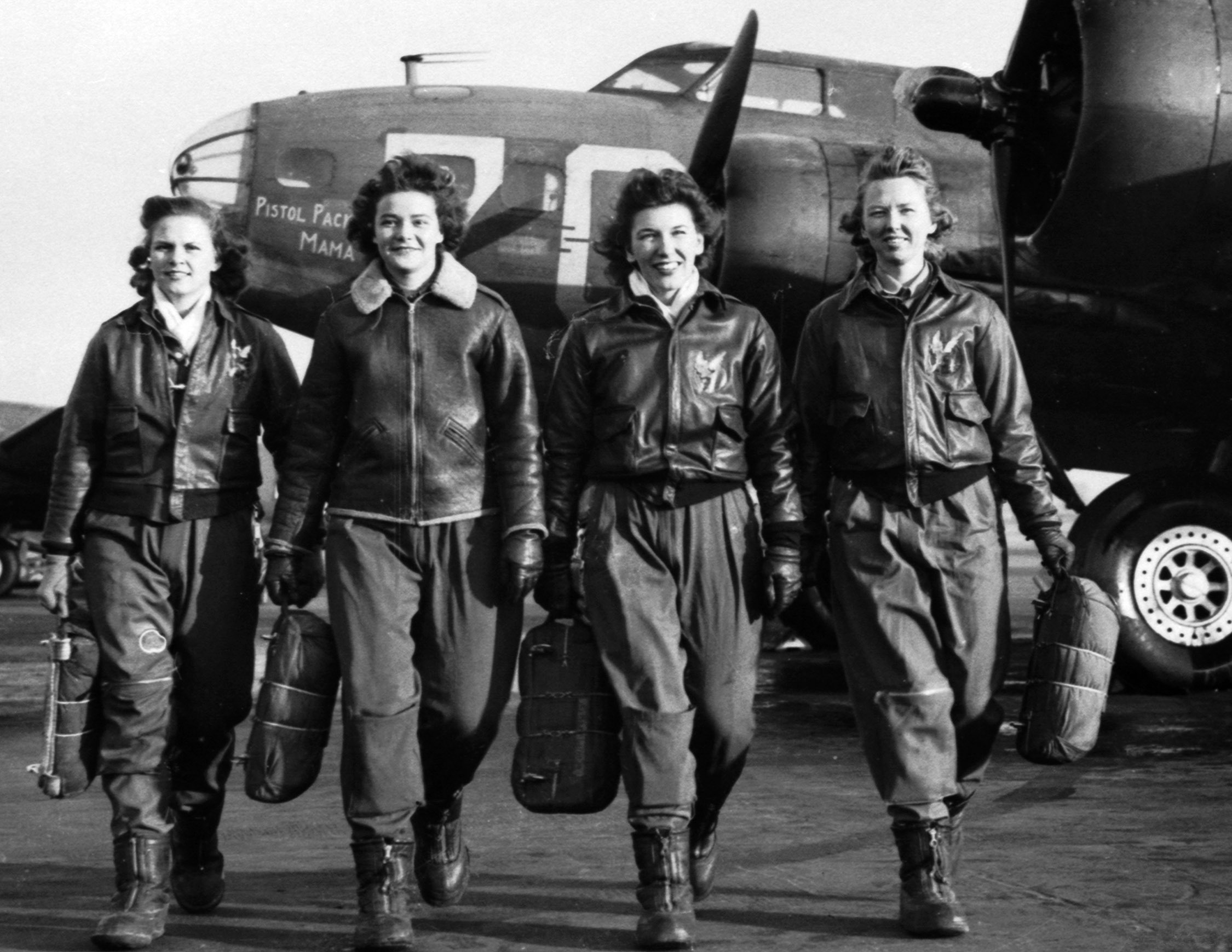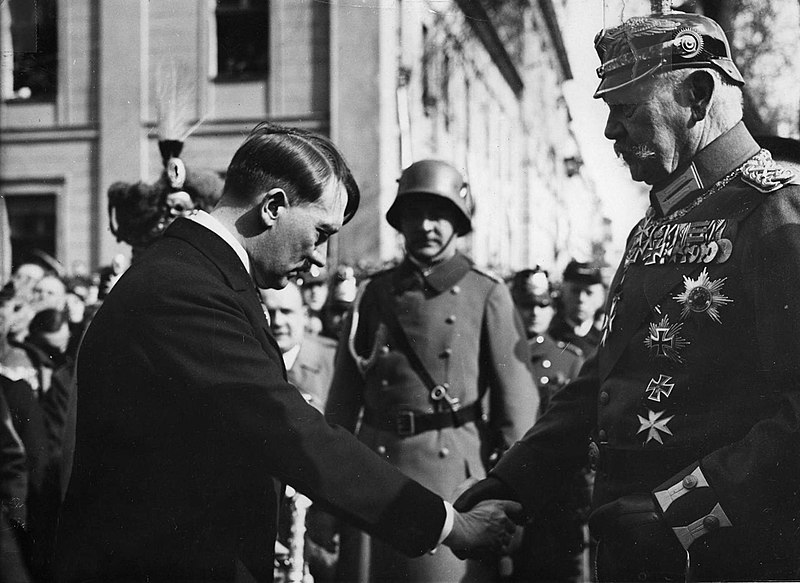
“Between 1942 and 1944, WASP pilots flew just about every sort of aircraft produced for the U.S. military from fighters and bombers to cargo planes and trainers.”
LAST WEEKEND, a 92-year-old Colorado woman did something she hadn’t done in 75 years – she got behind the controls of a piston-engined war bird and took it for a spin.
According to a story in the San Francisco Chronicle, Lucile Wise of Arvada, Colorado went up in the open cockpit Boeing Stearman bi-plane (along with a certified pilot) as part of a publicity event to promote an upcoming museum exhibit. The exposition, which opens in December at Denver’s Wings Over the Rockies Air and Space Museum, will celebrate America’s female fliers of World War Two. Wise herself was one of the more than 1,000 women pilots who shuttled military warplanes of every description around the continental United States during the conflict, freeing up male pilots for front line service. The exhibition will commemorate the achievements of these often-forgotten pioneers of the skies. And when considering these female wartime fliers, there is certainly much to commemorate.

The WASPs
Known as the Women Airforce Service Pilots (or WASPs for short), the quasi-military organization was made up of more than 1,070 women and served entirely in stateside roles. WASP missions included ferrying newly built warplanes from manufacturing plants to bases and overseas embarkation points, towing aerial targets for gunnery training and even transporting cargo.
Between 1942 and 1944, WASP pilots flew just about every sort of aircraft produced for the U.S. military from fighters and bombers to cargo planes and trainers. They flew 12,600 missions in all while piloting 78 different types of planes.
More than 25,000 women volunteered for the WASPs, fewer than 2,000 were chosen for training. Only half of those made the final cut.
The women aviators learned to fly at Avenger Field in Sweetwater, Texas. All received standard U.S. Army Air Corps flight instruction.
Although no WASP ever saw action, their flights weren’t without risk. Over the course of the program, 38 of the women died in flying accidents.
Sadly, because WASPs were not formally considered part of the armed forces, those killed in the line of duty were denied military funerals. Worse, the families of lost pilots had to cover the burial expenses themselves. The War Department even denied relatives flags for the the coffins. [1] There were attempts to bring the WASPs formally into the armed forces; none succeeded. Even legislation aimed at extending military benefits to the pilots was defeated in the House of Representatives in 1944. By the end of that year the program was disbanded and all but forgotten.
In 1977, Congress did vote to make WASPs eligible for veteran benefits. Seven years later, the surviving fliers were awarded the same Victory Medals that were bestowed to all World War Two vets. In 2009, the White House and Congress awarded the WASP program the Congressional Gold Medal.

Women of the ATA
Britain’s women pilots of the Second World War didn’t have to wait 30 years for recognition – they received it immediately. The fliers of the 1,300-strong aircraft Air Transport Auxiliary (166 of which were women) were publically credited with helping win the Battle of Britain. “The ATA carried out the delivery of aircraft from the factories to the RAF, thus relieving countless numbers of RAF pilots for duty in the battle,” said Lord Beaverbrook at the 1945 ceremony that disbanded the unit. “Just as the Battle of Britain is the accomplishment and achievement of the RAF, likewise it can be declared that the ATA sustained and supported them in the battle.”
All of the pilots in the ATA, both men and women, held military rank. And the female fliers were paid equal to their male counterparts. In fact, it was the first instance of equal pay for equal work in the history of the British public service. [2] WASPs on the other hand were paid less than two-thirds the salary of male pilots.
Like their American sisters, the women pilots of the ATA flew nearly every type of plane flown by the RAF and the Fleet Air Arm including Spitfires, Hurricanes, Mosquitoes, and Lancasters.
Between 1940 and 1945, the service delivered an amazing 308,000 aircraft from factories in the UK and North America to British airbases, logging 415,000 flying hours in the process. The ATA included pilots from around the British Commonwealth and even the United States. Fifteen of the women pilots lost their lives in the service.

The Night Witches
While Britain and America kept their women pilots out of harm’s way during the Second World War, the Soviet Union had few qualms about putting its female aviators into the thick of the fighting. Shortly after the German invasion of the U.S.S.R., Russia’s famous woman pilot Marina Raskova personally lobbied Stalin to let her raise and train a number of all-women squadrons. Three were established almost immediately. They featured not only female aviators, but women ground crews and mechanics too.
One of these units was the 586th Fighter Aviation Regiment, which flew into action in April 1942. During the course of the war, the squadron would fly more than 4,000 combat missions in their Yak 1 fighter interceptors, fight in 125 air engagements and be responsible for 38 kills. [3] The 586th even had two aces: Lydia Litvyak and Katya Budanova.

Another squadron, the 587th Bomber Aviation Regiment was commanded by Raskova herself until she was killed in an flying accident in 1943. This group performed so admirably, it won the coveted designation as a “Guards” unit, becoming known as the 125th Guards Bomber Aviation Regiment.
Perhaps the most famous of the three female squadrons was the 46th Taman Guards Night Bomber Aviation Regiment. In three years, the unit would fly more than 20,000 missions in their obsolete single engine Po-2 bi-plane trainers. The women fliers made full use of their woefully outclassed converted bombers, actually turning the aircraft’s weakness into a strength. Po-2s, which made excellent crop dusters in peacetime, were so slow that pilots in Germany’s frontline interceptors had trouble shooting them down. [4] The Russian plane’s top velocity was well below the stall speed of both the Me-109 and the Fw-190. The pilots in the Luftwaffe fighters risked crashing if they tried ease back on the throttle enough to engage the Soviet bombers. The bi-planes also had excellent gliding characteristics. This allowed the pilots to kill their noisy engines as they approached a target and silently surprise their unwitting enemies, often with devastating effect. [5] Because of this, the Wehrmacht soon got to know (and dread) the women fliers of the 46th. They called them the Die Nachthexen or “Night Witches”. By the war’s end, the squadron would lose more than 30 pilots but would produce 23 Heroes of the Soviet Union — an impressive record.

The First Female Fighter Pilot
While these women fliers of the Soviet Union were certainly trailblazers, none of them could claim to be the first female combat pilot in history. That honour goes to Sabhia Gokcen of Turkey. Adopted at a young age by a military flying instructor, the 23-year-old Gokcen enrolled in her country’s military air academy in 1936. Later that year she was assigned to the Turkish 1st Aircraft Regiment. Within two years she would be flying combat missions against Kurdish rebels. In one sortie she reportedly dropped a 50 kg bomb onto a formation of enemy insurgents. During her time as a military aviator, Gokcen felw more than 8,000 hours, more than 30 of which were in combat. [6] She continued to train pilots (some of them female) for the Turkish air force until the 1950s. She continued flying into the 1960s. She died in 2001 at the age of 88, however her memory lives on. One of Istanbul’s two international airports is named after her and next year, Turkey plans to honour the 100th anniversary of her birth.
______________________
If you’d like to receive alerts about the latest articles and posts, click on the link in the upper right margin marked “FOLLOW THIS BLOG”. And don’t forget to follow us on Twitter.










The BBC recently made a documentary about the ATA, which was called Spitfire Women. For UK viewers, it appears reasonably often on BBC 4 and will probably come onto Yesterday at some point, as do most BBC history documentaries.
No idea about overseas sales or co-producers. The link below to the BBC website gives a brief clip and links to a written interview with Margaret Frost, a WWII ATA pilot.
http://www.bbc.co.uk/programmes/b00tw1m1
We don’t get as many BBC programs in Canada, but our public broadcasters do show some of them, usually a couple of years after they’ve aired in the UK. I really wish we got the show “The Thick of It” — I’ve had to watch that on Youtube.
What an excellent post, sir. I forget the name of the courageous gal but there was an active search last year for her P-51 Mustang that never made it to her final destination. An aviation archeologist felt strongly the plane crashed into the Pacific Ocean soon after take-off from either Mines or Long Beach (as known during WWII) – I forgot which one.
Hey mustang, thanks for the praise. About the lost flier, I had never heard that store before, but it sounds like a genuine tragedy.
Found the story: http://abclocal.go.com/kabc/story?section=news/local/los_angeles&id=7051654
Ms. Gertrude Silver.
http://www.cbc.ca/archives/categories/war-conflict/second-world-war/on-every-front-canadian-women-in-the-second-world-war/spitfires-in-the-rhododendrons.html
Sabiha Gökçen was adopted by Mustafa Kemal Atatürk, founder of Turkish Republic.
http://en.wikipedia.org/wiki/Sabiha_G%C3%B6k%C3%A7en
One of the ATA pilots lost was Amy Johnson who set many pre war long distance flight records. She ran out of fuel over the Thames estuary, bailed out and was lost in the river. She was seen in the water and a sailor who dived in to help her was also lost. The ATA girls also delivered aircraft into Europe following the invasion in 1944.
Thanks for adding that.
Does anyone have the names of the four women at the top of this page. The 2nd one from the left looks like a picture of my wifes grandmother, we have very little information on her but we have one military picture that looks like this one. rcharpia@gmail.com
Slay Hunti slay
I would like a copy of this article but can’t print it. I helped develop the WASP exhibit at the Seattle Museum of Flight. It opened in 2004. It is 3 times the size of the Smithsonian WASP exhibit. We also included some information on the ATA girls and the Russian women pilots.